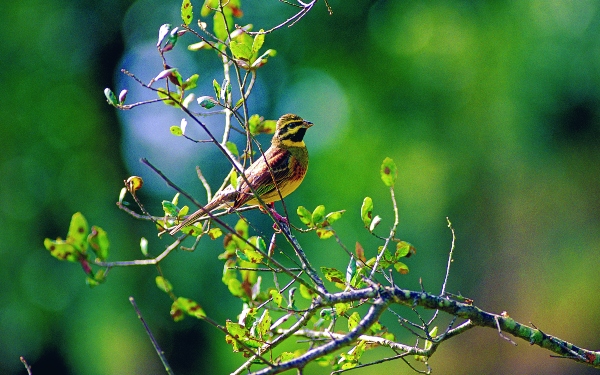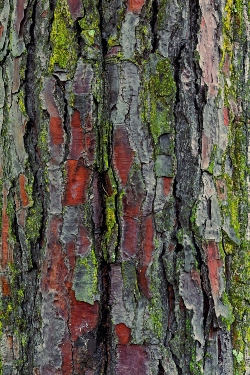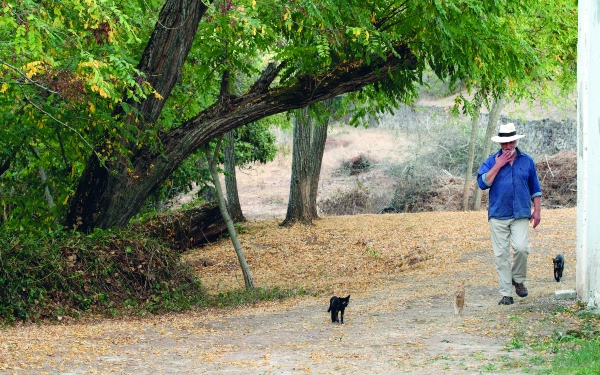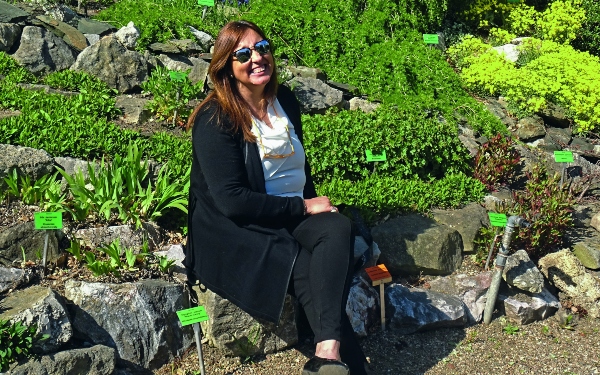One of the treasures of a balanced environment and a prosperous society, forests are also –and for many, above all – synonymous with the quality of life. This is the sensory dimension of the forest, its potential for emotional fulfilment and leisure.
Woodlands offer an experience that is unique for each of us, because it is shaped by our senses. It has inspired artists to create masterpieces. The Calouste Gulbenkian Foundation, in Lisbon, recently presented a series of concerts with the title “Silent Forests”, where the strains of Dvorák offered a “way of listening to how Nature can come to life in music.”
The forest is a treasure that belongs to each of us, to be shared by all. In return for everything it gives us, it asks only that we treat it with respect. This includes causing as little impact as possible when we visit woodlands in our leisure time, and also managing them responsibly when we exploit its raw material, by planting trees for this purpose, creating new forests in a virtuous and sustainable cycle.

Back to nature
Trees have inspired the human imagination since the dawn of time. We have wondered at their strength and flexibility and been grateful for their contribution to the air we breathe. The whisper of a breeze through their leaves, the scent of their bark or the sight of a line of ants marching up their trunks in a perfect straight line are enough to remind us of the magic of nature and how trees embody it.
Forests reconnect us with our roots. And this heightens our senses. Everything is more intense when we follow a woodland trail, in the shade of the trees. Colours are more vibrant, smells are stronger, the grass is softer, the birdsong is more lyrical, even the apple we brought in our backpack tastes sweeter.
A woodlands walk lifts our mood. This is what our intuition has always told us, but in recent decades this has started to be explored more scientifically. There is now plentiful evidence that physical exercise in the forest, or simply sitting and looking at trees, lowers blood pressure and hormones associated with stress (cortisol and adrenalin).
Using the POMS (Profile of Mood States) test, researchers have been discovering that spending time deep in the forests also significantly reduces anxiety, depression, anger and fatigue.
In Finland, for example, the Government has funded research that asked thousands of people to assess their state of mind and stress levels after visiting rural and urban areas. On the basis of this research, Prof. Liisa Tyrväinen and her team at the Finnish Institute of Natural Resources recommend a minimum dose of exposure to nature of five hours a month, spread between several short visits a week, to keep lifting people’s mood.
But even so, we need to spend time in a natural setting not because scientists tell us to do so, but because it’s something that makes us feel better.
The secret conversation of trees

Trees talk to each other, using a network of fungi that scientists have dubbed the Wood Wide Web. Some use this system to share resources, whilst others use it to outwit their rivals. Using this network of mycorrhizal fungi (a layer of filaments that connects around 80% of all terrestrial plant species), trees share information and warnings (such as insect infestation hazards), and older trees can share sugars with younger trees, improving their chances of survival.
Merlin Sheldrake, a scientist studying these networks at Cambridge University, told a journalist from The New Yorker: “Whenever I need to explain my research in simple terms, I say that I work on social networks of trees.” Because that is more or less what it is. A huge social network, that would put Facebook or Instagram to shame, with no less than 3.04 billion users. All involved in an invisible conversation, which we humans are still unable to decipher. But if we wrap ourselves in the sensory experience of the woodlands, and learn to listen with our heart…. who knows?
“The trees will outlive us”
Writer, poet, painter, translator. Miguel de Castro Henriques is a man of many trades, with deep roots in nature and the forest. He spoke to us about the magic of trees and the emotional bond we have with them.
“I fell in love with nature when I was a kid. I’ve always liked to be in the woods. The forest can teach us. It speaks to us in a thousand ways. It transcends thought. It’s something very sensory and very profound.”

When we asked if he finds inspiration for his art in trees, he smiled. “Inspiration,” he repeated, like a meditation. “Inspire. Breathe in. Air. We can’t breathe in without trees! We’re connected to trees by the simple fact that we breathe and we need to breathe to live. It’s more than a symbiotic relationship.We’re in a network with the trees. If they vanish, so will we. So yes, my inspiration is a sense of sensory involvement with nature. It’s an exercise for all the senses. When I write a poem, for example, it aspires to being nature. An essence of nature.”
The human connection with trees is something he feels passionately about. “Nature is full of spirit, intelligence, sensibility,” he said. “I never understood the expression ‘in the time when animals talked’, because that time is now.
All of nature speaks. You just need to be able to listen. To listen you need to turn off the constant chatter in your mind. You need to reach an inner silence, to understand a language which is not the same as ours, but which is there. It’s that silence we’re looking for when we venture into the woods.”
“Forests are also made of scents”
Woodlands have the smell of moss, tree trunks, flowers, plants and paths carpeted with pine needles and eucalyptus leaves. Fernanda Delgado, agronomist, lecturer and researcher at the Higher Agricultural Institute at Castelo Branco Polytechnic, tells us about woodland scents.

“Plants are the most amazing living thing there is,” said Fernanda Delgado at the start of our interview. “We can’t live without them, but they get on fine without us.” Her admiration has inspired her in-depth research into aromatic and medicinal plants, looking at production issues, and also at natural biodiversity. “They’re plants that people use, they inhale and ingest them, so we need to know what we’re dealing with,” she explained.
From eucalyptus to rosemary, lavender to pine, there is an abundance of scents that reawaken memories and bring us a subtle sensation of familiarity. But, in this world of aromas, our sense of sight also plays a crucial role: “There’s a highly intense visual component, that makes people stop and look at plants. The yellow of gorse, the lilac of lavender and rosemary… At this time of year, these plants attract people to the countryside, for a hike or a stroll.
But it’s not just the visual attractions in the woods that come to life in spring. “As the temperature rises, plants exhale their aromas,” explained Fernanda Delgado. But there is one aromatic exception that flowers all year round: rosemary.
Of the trees, the treasures are eucalyptus, pine and cedar, which have the most easily identifiable aroma. One of the most common uses of these forest aromas is to produce natural essential oils. Eucalyptus oil, for example, is one of the mostly widely sold essential oils worldwide. Probably because it’s scent is also one of the most widely recognised and best loved. “When the hot weather comes and you pass a eucalyptus grove, the scent is delicious,” the expert told us.